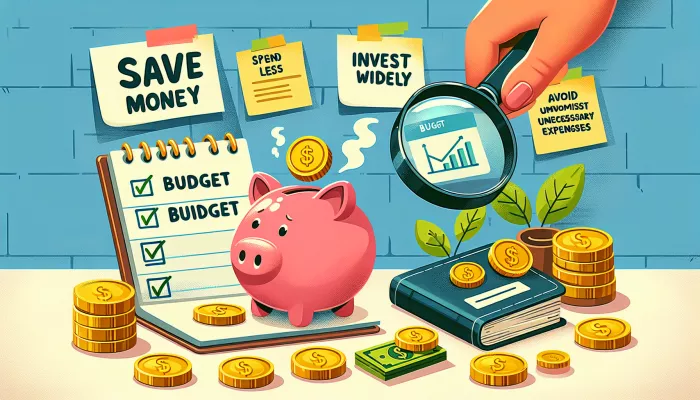
Clear objective is the first critical step to saving money. Without a clear goal, it’s easy to get caught up in the mundane expenses and forget to save. To start, define what you want to achieve.
It could be buying a new house, a car, a dream trip, or even an emergency fund for greater financial security. The more specific your goal, the more focused you will be.
Analyze your current finances to determine how much you can start saving. This involves calculating your monthly expenses and seeing what is left over. Any amount you can save is worth it.
A good strategy is to put this money into a separate account or investment as soon as you receive your salary or income.

Setting a specific amount and time frame for your goal is crucial. If your goal is to save R$10,000 in two years, you need to save about R$1,417 per month.
This gives you a monthly target and makes the big goal manageable month by month. Breaking it down into smaller chunks also helps you feel like you’re making progress, which is extremely motivating.
Staying motivated is easier when you can see your progress. Create a graph or use online tools to visualize how much you’ve saved toward your goal.
Celebrate small milestones, like saving your first R$1,000, and stay focused on the bigger goal.
And remember, adjustments may be needed along the way, so be flexible to reevaluate and adjust your goal as needed.
Remember that saving money requires discipline, patience and an ongoing commitment to your future.
Setting clear goals and taking deliberate steps to achieve them will put you on a path to greater financial security and achieving your dreams.
Achieving your savings goals requires more than just the intention to save. It requires practical strategies and a consistent approach.
Below, we will discuss several proven techniques to help you successfully achieve your financial goals.
The best way to ensure you're saving consistently is to make the process automatic.
Set up an automatic transfer of a portion of your paycheck directly to a savings account. That way, you save before you have a chance to spend.
Review your monthly spending and identify areas where you can cut costs. This could include dining out, unused subscriptions, or impulse spending.
Reducing these expenses can free up a significant amount of money for your savings.
Having clear goals can help motivate you to save. Break your goals into short-term (3-6 months), medium-term (1-3 years), and long-term (3+ years) to maintain a balanced focus on your financial aspirations.
As your income or expenses change, adjust your budget to ensure your savings goals remain achievable.
Regular review helps identify challenges and opportunities to save more.
Applications (apps) Financial management and budgeting tools can be incredibly useful resources.
They help you track your spending, save money, and visualize your progress toward your goals.
Considering alternative sources of income, such as freelancing or selling online, can speed up your progress toward your savings goals.
Any extra money you earn can go straight into your savings.
Ultimately, long-term success in saving requires patience and discipline. The results may not be immediate, but with consistency, you will reach your financial goals.
By incorporating these strategies into your routine, you will be better equipped to achieve your savings goals and ensure a more secure and prosperous financial future.
For more information on how to implement these strategies, visit the following links:
Identifying obstacles is the first step to overcoming them. Throughout our savings journey, we encounter difficulties that seem insurmountable.
But don’t worry, for every problem, there is a viable solution.
When unexpected expenses arise, they can easily throw us off track from our savings plan.
The most effective way to get around this obstacle is to have a emergency fund.
Starting a fund that covers three to six months of expenses can provide a safety net that allows you to continue saving even when unpleasant surprises happen.
Stay motivated regularly reminding yourself of why you are saving.
Whether it's for a trip, buying a house, or a peaceful retirement, view your goals can reignite the economy's flame.
Additionally, setting small goals and celebrating each achievement can make the process more rewarding.
Debt can be a major impediment on your journey to saving more. An effective strategy is to adopt the avalanche method or snowball method to pay off debts.
This means paying off the highest interest debts first (avalanche) or starting with the smallest debts (snowball), depending on which strategy best suits your personal style.
If you feel that your income is not enough to save, look for ways to increase it.
This could include looking for additional work opportunities, selling unused items, or even investing in skills to access better-paying positions.
Every small increase in income can be put directly into savings.
Impulsive spending can quickly erode your savings.
Implement strategies such as waiting 24 hours before making non-essential purchases or setting a monthly budget for discretionary spending.
These tactics help create an extra layer of reflection before spending, allowing you to reevaluate whether the purchase aligns with your savings goals.
Overcoming these obstacles requires an ongoing commitment to your financial goals, but by implementing these strategies, you’ll be well on your way to saving more and achieving your goals.